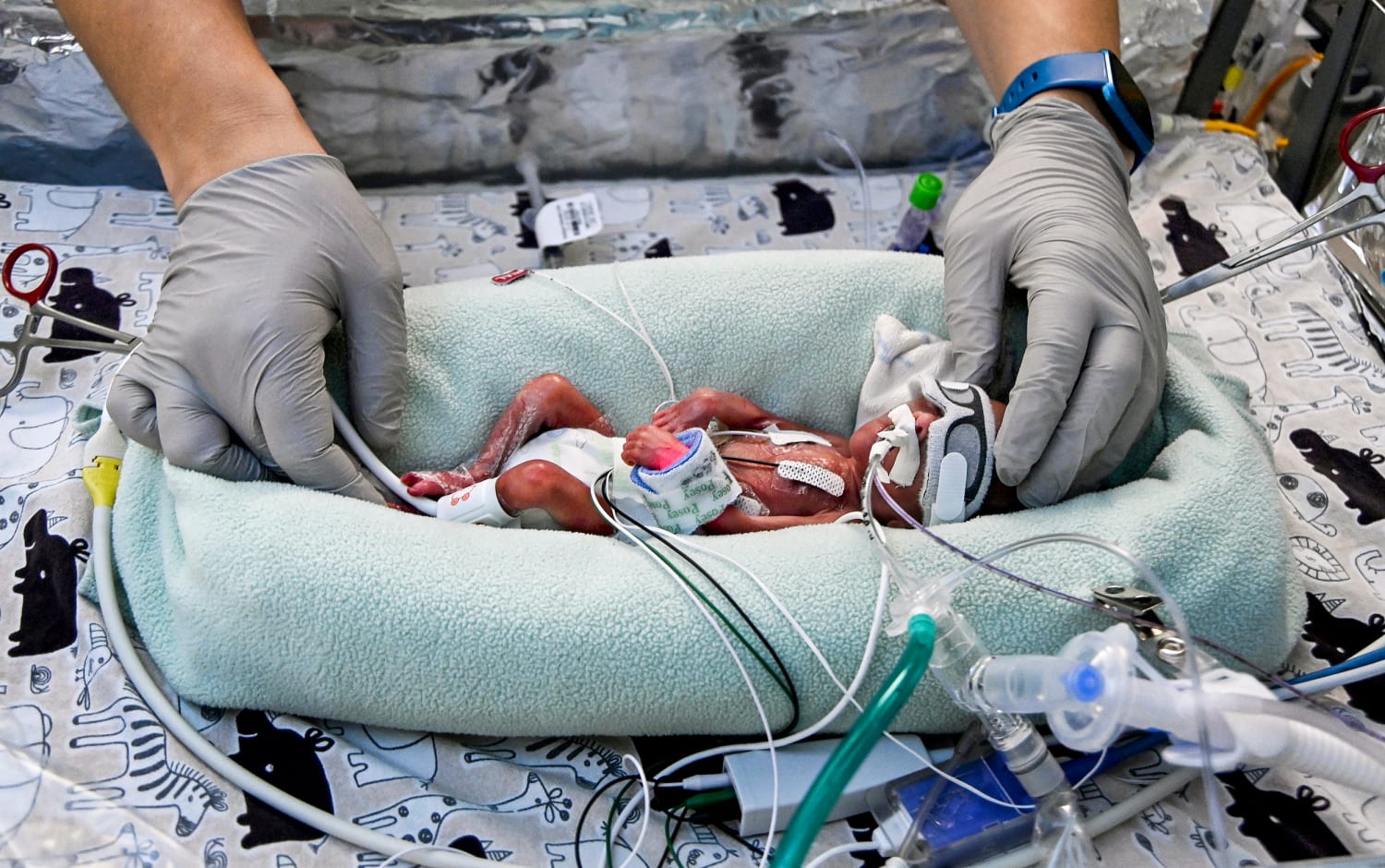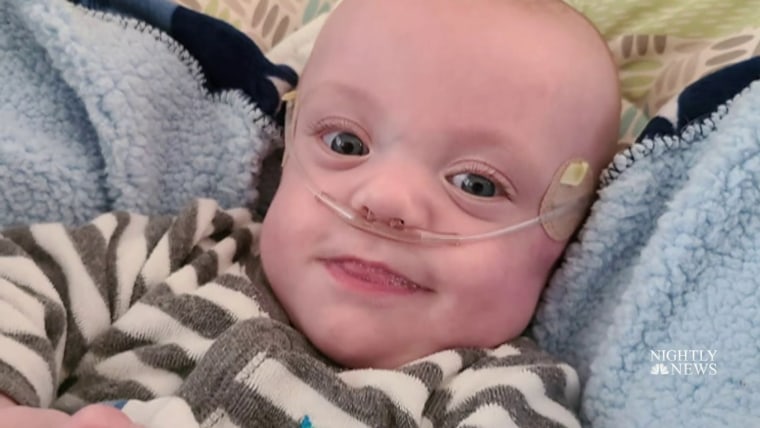The word “viable” means capable of living. Capable sounds definitive. But as a neonatologist dedicated to caring for premature babies born near the limit of viability, I can assure you it is not.
Under the 1973 Roe v. Wade Supreme Court decision, the concept of viability has served as the dividing line as to when abortion restrictions can be imposed on pregnant women. But the leaked draft of a pending Supreme Court decision suggests Roe will soon be struck down. That means determining viability, and how science has advanced the possibility of viability since Roe, could become a central consideration as legislatures across the country weigh new laws governing abortion access.
Parents’ autonomy to decide whether to have their periviable baby undergo painful intensive care that has a very low likelihood of resulting in survival — and an even smaller likelihood of disability-free survival — could be at stake.
I worry about lawmakers who may not understand infant intensive care, and who have not supported parents stressed by extreme preterm births. I worry they won’t recognize the nuances inherent in deciphering viability, and how much survival at the limits of viability relies on access to highly specialized medical care, and how it can vary dramatically from case to case. I worry laws will be out of step with what neonatal care can accomplish, since it does not guarantee neonatal survival and comes with potential life-long complications if these children do survive. I worry that parents’ autonomy to decide whether to have their periviable baby undergo painful intensive care that has a very low likelihood of resulting in survival — and an even smaller likelihood of disability-free survival — is at stake as well.
I witness inherent ambiguity when I cradle babies born at 22, 23 and 24 weeks of gestation in my arms. These babies are periviable, meaning nearly capable of living. Because living outside the womb five months earlier than intended is exceptional, improbable, miraculous. I implore political leaders to familiarize themselves with the risks and question marks in neonatal care, as well as the resources required — as it is invasive, expensive and inconsistently available.
While most women deliver healthy babies, maternal health crises resulted in 7,300 periviable babies born in 2020. For a periviable baby to survive entails preparation, planning, coordination and expertise. Preparation begins with identifying the crises that beget periviable births and making sure these crises are managed at hospitals with experience and expertise in this area. Sometimes a crisis announces itself in a gush of fluid or a gaping cervix or a cluster of contractions so early and extreme they do not stop. Sometimes a crisis hides, as in an illness or injury gripping a pregnant body with insidious instability, forcing obstetricans to weigh the risks of their patient remaining pregnant with the risks of preterm delivery.
When we encounter a crisis, neonatologists like myself consult with pregnant women and their partners in crisis to determine their wishes and set expectations for their about-to-be-born, periviable babies. When I have these discussions, words drift from my lips to parents’ ears. Life support. Handicaps. Pain. Death. These words are absorbed inconsistently. They are remembered and misremembered, fumbled and finessed. Often, parents must mourn the futures they envisioned for their families even as they must decide the next steps for their newborns, particularly whether they want their babies to undergo the invasive interventions. In these conversations, I focus on expectations and misconceptions surrounding the delivery and stabilization process.
I caution that providing every possible intervention may not result in survival. Only 1 in 10 babies born at 22 weeks survives to go home, and that’s after months of intensive care. At 24 weeks, the likelihood of survival increases to only 68 percent. Infants born beyond 25 weeks are no longer considered periviable, as each successive week of pregnancy confers protection against death and disability, but these complications remain possible even when babies are born on time.
I prepare parents that their periviable babies likely will not — cannot — cry. These babies are typically incapable of drawing a first breath. Even those capable of that first breath cannot sustain a throaty trill without support. Underdeveloped, or absent, air sacs inside immature lungs may not be capable of filtering oxygen in and carbon dioxide out even with the addition of life support. I caution that, if this happens, the baby will die.
I warn parents that the first glimpse of their babies might be jarring. They might see eyelids fused shut or a heart pulsating through the gelatinous sheen of immature skin. I caution parents that I will need to wrap their roughly 1-pound, 10-inch babies in pastel-patterned cotton blankets and pivot out the doors of their labor rooms toward a specialized resuscitation room before their babies can even be seen. I do this to keep them safe. I promise to do all I can.
In the resuscitation room, my skilled neonatal team has everything needed to try to save these lives. Every movement is orchestrated, rehearsed. I place each baby on a warming bed, atop a chemically heated mattress. They typically lie limp, motionless. A nurse attaches monitors to the baby’s arms, legs and chest while another nurse places the baby’s arms, legs and torso inside a plastic bag.
This plastic bag, warming bed and warming mattress are the initial compensation for immature skin. A tiny woven hat embedded with plastic is added. All to warm, to protect. Skin should be a barrier between a body and everything outside it, but a periviable baby’s skin lacks the outermost layer that keeps germs outside the body while keeping water and warmth inside. Without that outermost layer, medical tape, essential to hold life-saving equipment in place on the baby’s body, can tear or burn, if it adheres at all. Tender touches may tear the tissue open.
I focus on these babies’ breaths. My index finger depresses a plastic valve, attached to a mask held over the baby’s mouth and nose, with steady rhythm. Then a teammate assumes this role as I prepare to place a breathing tube behind the tongue, between the vocal cords and into the windpipe. The baby’s mask lifts briefly, and I slide the tube inside. It is tempting to focus on this intubation as the only important action. It is true that without deftly, correctly and quickly placing this tube — akin to a juice box straw because the windpipe isn’t much larger — a periviable baby has no future. But to focus on it is to hear only the solo and miss the symphony. Every action, every team member, every practiced step of stabilization matters. Without it all, a periviable baby cannot survive his or her first precious minutes.
After intubation, we use that tube to administer medicine, oxygen, teaspoon-sized breaths of air. Life support underway, we assess each baby’s response to these actions. If the baby doesn’t respond to our efforts, which sometimes include additional efforts to sustain or restart a beating heart, the baby may die right there. Only about 1 in 5 babies born at 22 weeks and undergoing intensive treatment survives the first 12 hours of life.
Viability is not a line. It is not a concrete fact or threshold or a date on a gestational calendar with absolute outcomes.
If the baby responds, our team moves our patient to the neonatal intensive care unit. On the way, we wheel the incubator back into the labor room. I always say congratulations. I always say the baby’s name. I always say, this is the beginning. Parents see a head, the size of a mother’s fist, peek out above the plastic bag. They note a stripe of tape above the lips, a tube inside the mouth, a hat atop the head. A team member opens a porthole into the incubator so a parent may reach inside. The baby’s entire hand is no bigger than a parent’s fingertip. After a caress, the parent’s hand retracts. We close the porthole and prepare for our next steps.
For my patients born periviable, the first moments outside the womb mark the beginning of a journey fraught with unknown endings. Detailed pamphlets on hand at some hospitals depict risks of death and disability. Complications are likely. The majority of babies who survive have a combination of intellectual impairment, cerebral palsy, breathing problems, blindness, deafness, recurrent hospitalizations or other serious complications.
Viability is not a line. It is not a concrete fact or threshold or a date on a gestational calendar with absolute outcomes. The intensive care journey is never simple. No one can know how much to worry. We cannot measure and test and fix the future. Sometimes perfect planning, advanced technology and medical expertise cannot contend with a crisis. For now, the mixture of science, nursing skill, doctors’ care and parents’ tears, love and prayers combine to support these nearly viable humans. When asked, our team tries everything to make survival a little bit likely. But it’s never certain.
Source: | This article originally belongs to Nbcnews.com










